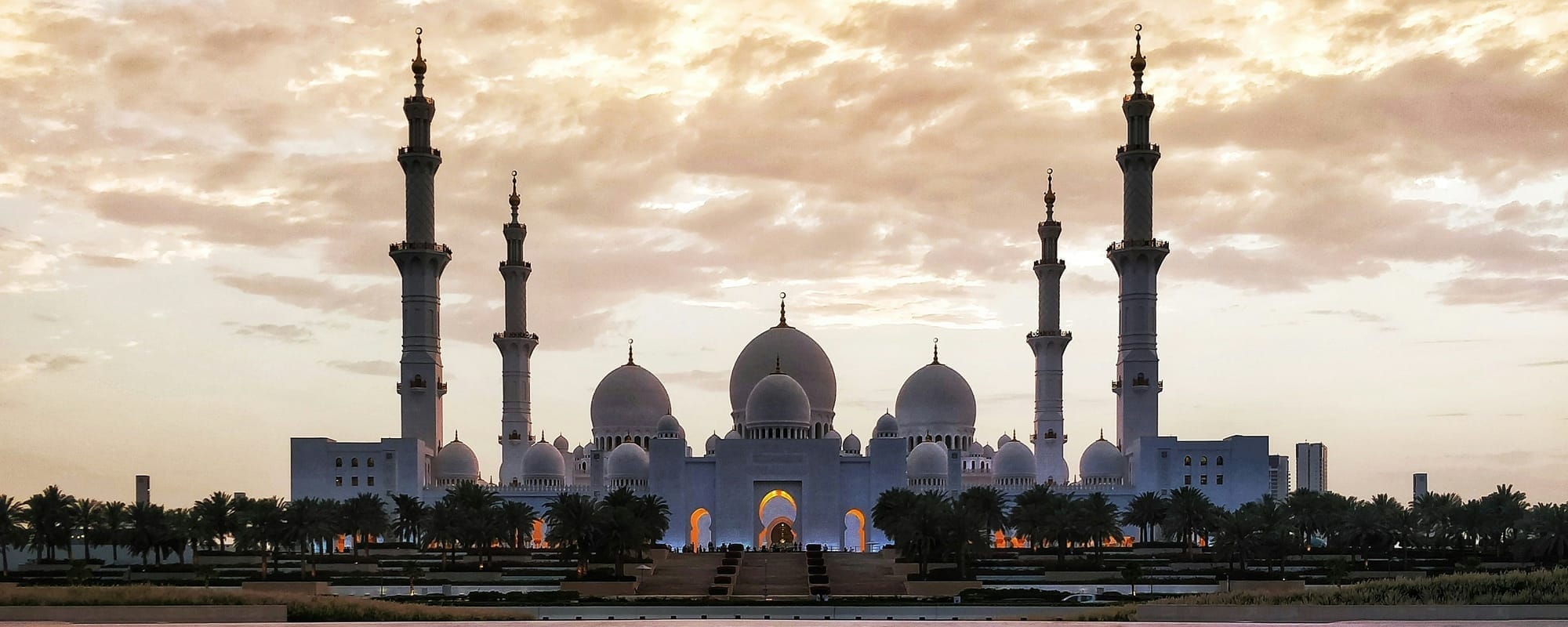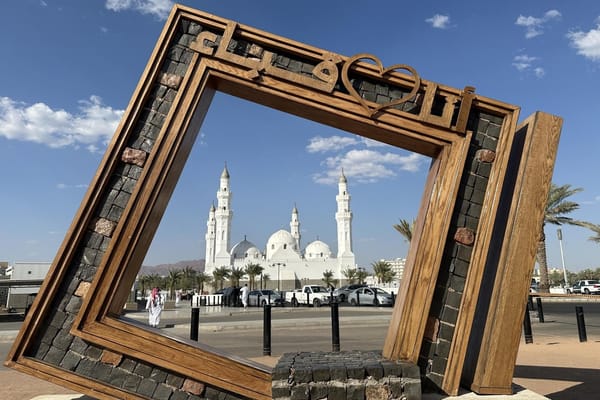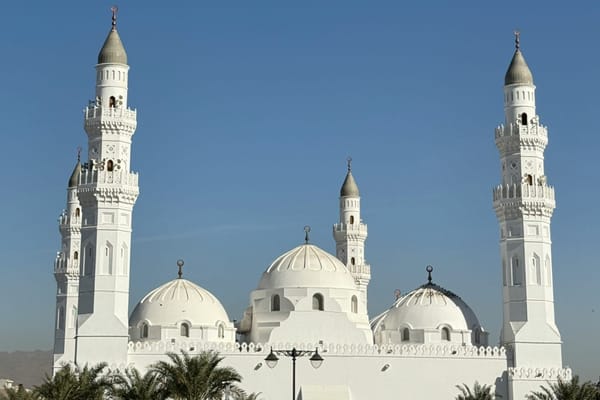Visiting Quba Mosque — also known as Al Quba Masjid — is a must for anyone exploring the spiritual landmarks of Madinah. Recognized as the first mosque built in Islam, it holds exceptional historical and religious significance. More than just a site of worship, Quba serves as a living connection to the Prophet Muhammad’s (ﷺ) arrival in Madinah and the early foundations of the Muslim community.
Whether you're a pilgrim staying near Masjid al Nabawi, or a first-time traveler exploring the sacred city, this complete guide covers everything you need to know about Quba Masjid in Madinah — from its powerful history and spiritual rewards to practical travel tips and the best ways to get there.
What is the History of Quba?
The story of Quba Mosque begins in 622 CE, the year of the Prophet Muhammad’s (ﷺ) migration from Makkah to Madinah. On his arrival at the village of Quba, just outside the city, he paused to rest and initiated the construction of a mosque — the very first in Islam.
With his own blessed hands, the Prophet (ﷺ) laid the foundation of Masjid Quba, a space built on taqwa (piety). Over time, the once-small village was absorbed into the growing city of Madinah, and Quba Mosque became one of its most revered spiritual sites.
Key Historical Facts:
- First mosque in Islam
- Built by the Prophet Muhammad (ﷺ) himself
- Mentioned in the Qur’an for its purity and righteousness (Surah At-Tawbah 9:108)
- The Prophet (ﷺ) used to visit it every Saturday
Major renovations occurred under various Islamic rulers, including the Ottoman Empire, with the largest expansion currently underway as part of Saudi Arabia’s Vision 2030.
Is Praying in Masjid Quba Equal to Umrah?
One of the most spiritually rewarding reasons to visit Quba Mosque is the immense virtue tied to praying within its walls.
The Prophet Muhammad (ﷺ) said:
“Whoever performs ablution in his house and then goes and prays in the Mosque of Quba, he will have a reward like that of Umrah.”
(Narrated by Ibn Majah, 1412 – graded Sahih)
This hadith motivates millions of visitors every year to perform two rak’ahs of prayer at Quba Mosque after making wudu, in hopes of earning the reward of an Umrah. The Prophet (ﷺ) himself used to visit Quba Mosque every Saturday, walking from Masjid un Nabawi — a practice that many pilgrims replicate to this day.
If you prefer convenience over walking, the Hop-On Hop-Off bus is a great option to explore the area. It departs near Gate 333 of Masjid un-Nabawi, providing easy access to key sites like Quba Masjid, Mount Uhud and other important Ziyarat locations.
Spiritual and Cultural Significance
Quba Mosque is mentioned directly in the Qur’an in Surah At-Tawbah (9:108) as a mosque “founded on piety from the first day”. This spiritual weight makes it an essential stop for pilgrims, scholars, and seekers.
For first-time visitors, the mosque offers more than ritual prayer — it’s a place of reflection, tranquility, and connection with the earliest moments of the Prophet’s (ﷺ) mission in Madinah.
Architectural Features of Al Quba Masjid
The current structure of Al Quba Masjid reflects a harmonious blend of Islamic tradition and modern design. The last major reconstruction was carried out in 1986 under King Fahd, but a new and even larger expansion has been initiated under King Salman and Crown Prince Mohammed bin Salman.
Notable Features:
- Four towering minarets marking its corners
- 62 domes of various sizes adorning the roof
- A large central prayer hall accommodating over 20,000 worshippers
- Designated women’s prayer areas for privacy and ease
- Open skylight (hole in the dome) that lets in natural light and symbolizes divine presence
- Lush courtyard gardens and marble pathways surrounding the mosque
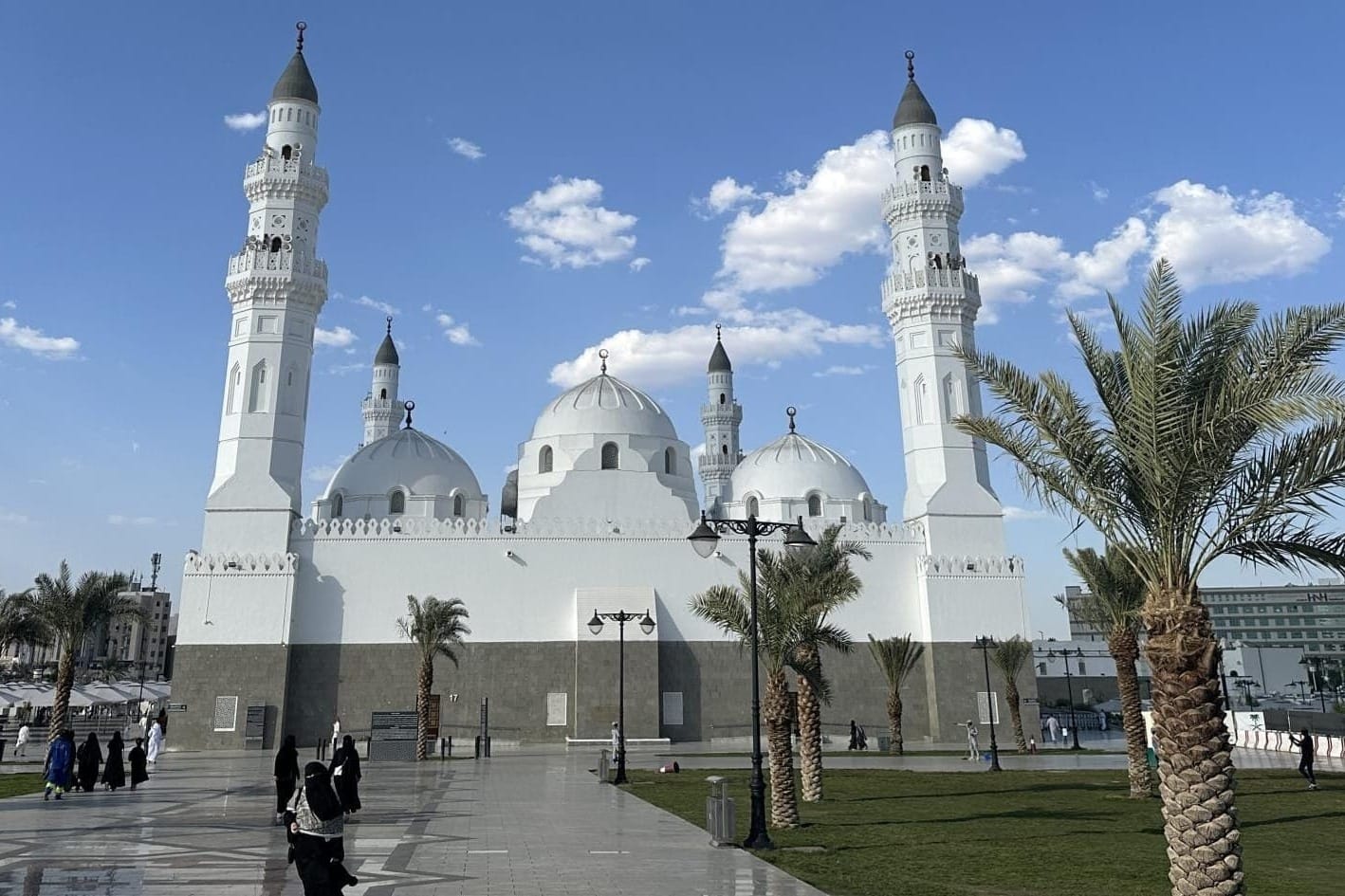
What Is the Hole in the Dome of Masjid Quba?
If you look up while inside the main prayer hall, you’ll notice a hole in the central dome. This architectural feature is not accidental — it has both symbolic and practical significance.
- Spiritual Symbolism: The light that streams through represents purity and divine illumination — aligning with Quba Mosque’s Qur’anic description as a mosque “built on piety.”
- Traditional Design: Early Islamic architecture often incorporated open domes for ventilation and natural light. Quba Mosque’s design preserves this historical tradition.
The effect is stunning, especially during early morning or Maghrib prayers, when the sunlight filters down gently into the mosque.
Visiting Quba Mosque
Opening Hours:
Open 24 hours a day, 7 days a week. The mosque is especially serene during early mornings and after Fajr prayer.
Etiquette:
- Perform wudu before arriving
- Remove shoes before entering prayer halls
- Maintain a peaceful, quiet demeanor
- Refrain from photography during prayer times
How to Get to Quba Mosque: All Your Transport Options
Quba Mosque is located about 3 kilometers south of al Nabawi mosque, and visitors have a few options to reach it — though some are more convenient than others.
1. Walking
You can follow the Prophet Muhammad’s tradition by walking from Masjid al Nabawi to Quba Mosque. There’s a paved pedestrian route connecting the two, and the walk takes about 30–40 minutes. While spiritually meaningful, it may not be ideal in Madinah’s intense heat, especially during the day.

2. Taxi or Ride-Hailing Apps
Taxis and ride services like Uber or Careem are available, but they can be hit-or-miss during peak hours or around prayer times. Prices may vary depending on demand, and language barriers can occasionally make communication a bit tricky.
3. Hop-On Hop-Off Bus (Best Option for Most Visitors)
Among the available transport options, the Madinah Hop-On Hop-Off Bus is often chosen for its ease and coverage. This air-conditioned sightseeing service includes Quba Mosque as one of its key stops, along with several other major landmarks.
- Departure point: Near the northwestern plaza of Masjid al Nabawi
- Features: Multilingual audio commentary and city views along the route
- Schedule: Runs at regular intervals throughout the day
This option is especially popular among first-time visitors and pilgrims looking for a hassle-free way to explore Madinah’s top Ziyarat spots in one trip.

Nearby Attractions to Masjid Quba
Many sacred and historical ziyarat sites are within close reach of Quba Mosque:
- Masjid al Nabawi: The heart of Madinah and one of the holiest sites in Islam. Home to the Prophet’s (ﷺ) tomb, it is just a short ride or walk from Quba.
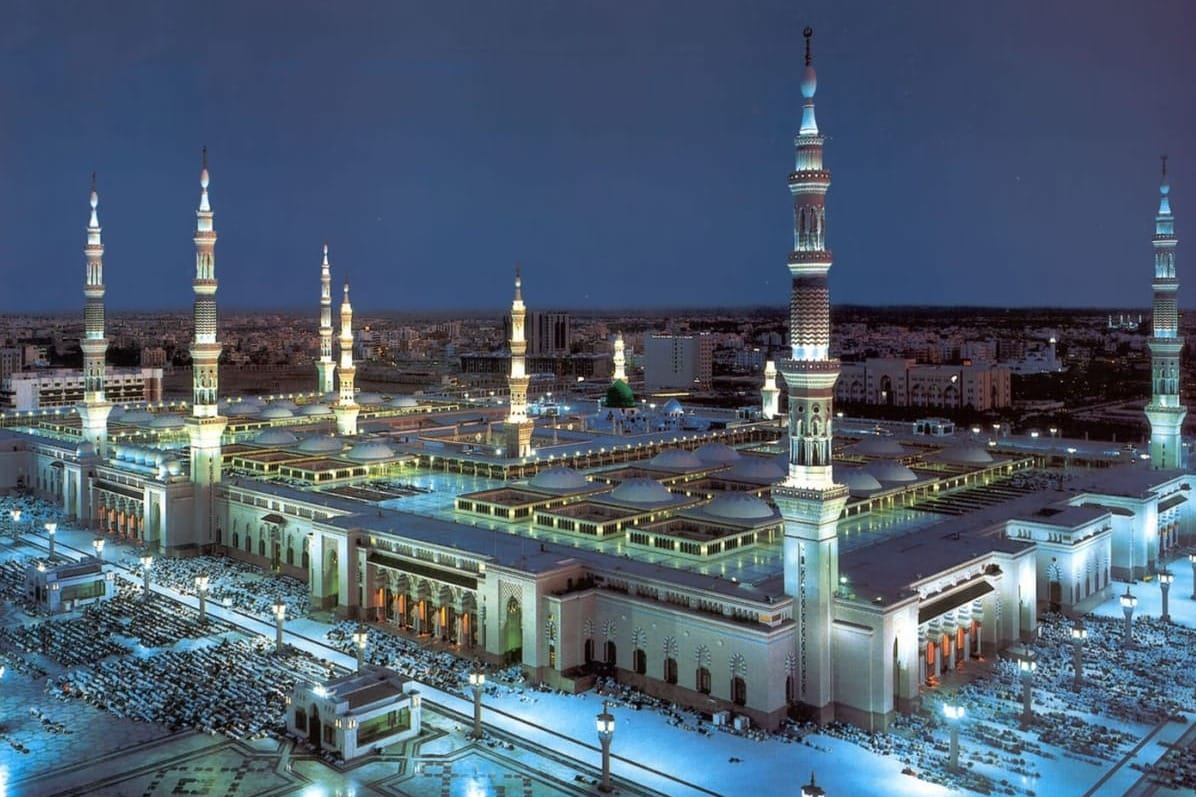
- Masjid al Qiblatain: The mosque where the qibla (direction of prayer) was changed from Jerusalem to Makkah during a prayer led by the Prophet (ﷺ) — a must-see for Islamic history lovers.
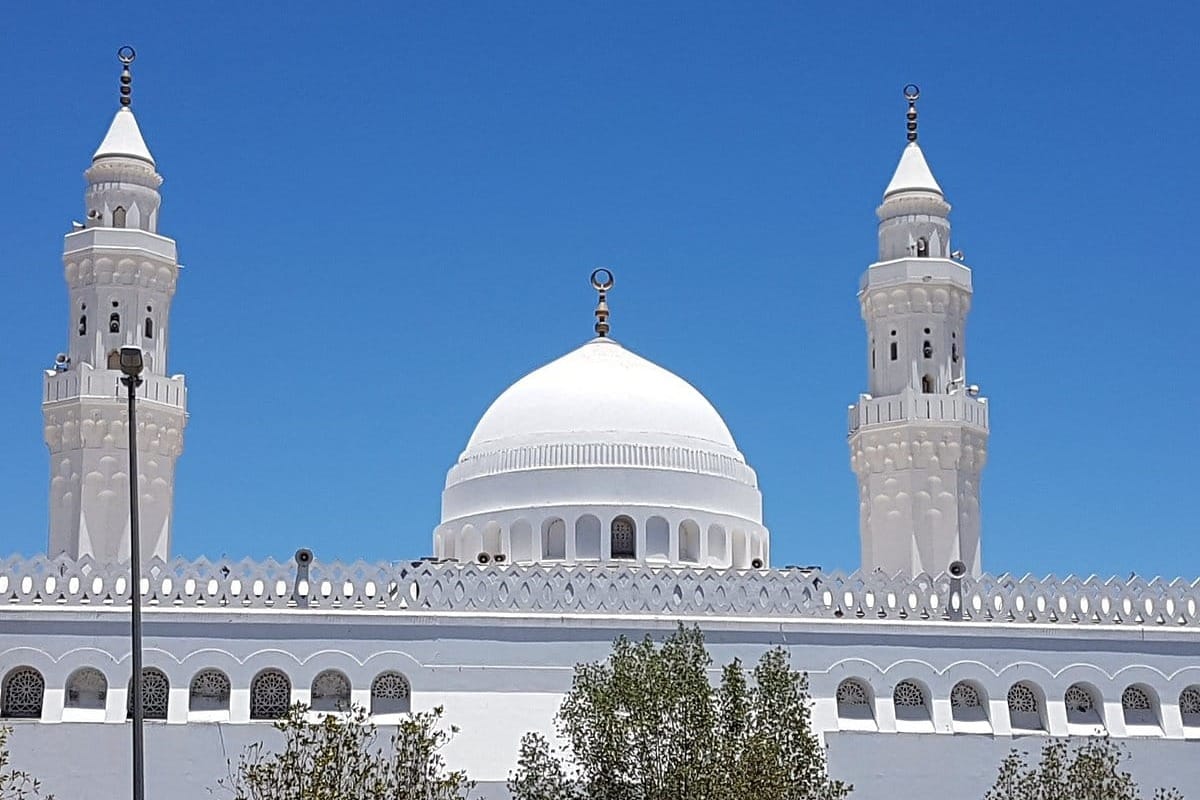
- Mount Uhud: The site of the second major battle in Islamic history. Visitors often climb the lower slopes for a reflective moment overlooking the battlefield.
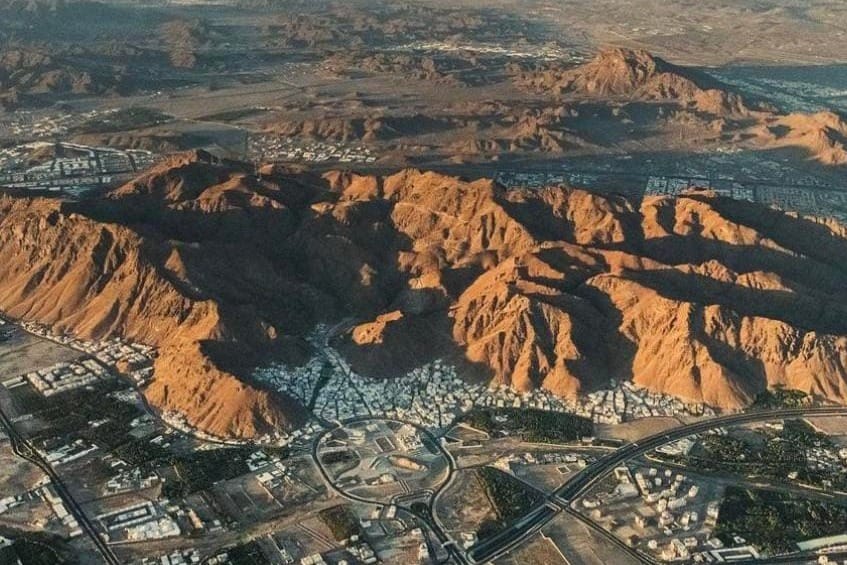
Tips for Your First Visit to Quba
- Time your visit: Early morning is peaceful and less crowded.
- Perform ablution before arriving to earn the Umrah reward for praying.
- Bring a prayer mat for outdoor areas during peak times.
- Use the Hop-On Hop-Off Bus to combine your visit with other landmarks.
- Check local advisories for any temporary construction zone closures.
Final Thoughts
Visiting Quba Masjid is a chance to connect with Islamic history, earn spiritual rewards, and experience the tranquility that defines Madinah. Whether you arrive on foot like the Prophet (ﷺ), or take the modern route via the Hop-On Hop-Off Bus, your visit to Al Quba Masjid will be one to remember.
As Madinah continues to grow, the mosque’s expansion ensures that future generations can experience the same peace, beauty, and blessings that pilgrims have cherished for over 1,400 years.
May your journey to Madinah be filled with ease and your prayers accepted!

